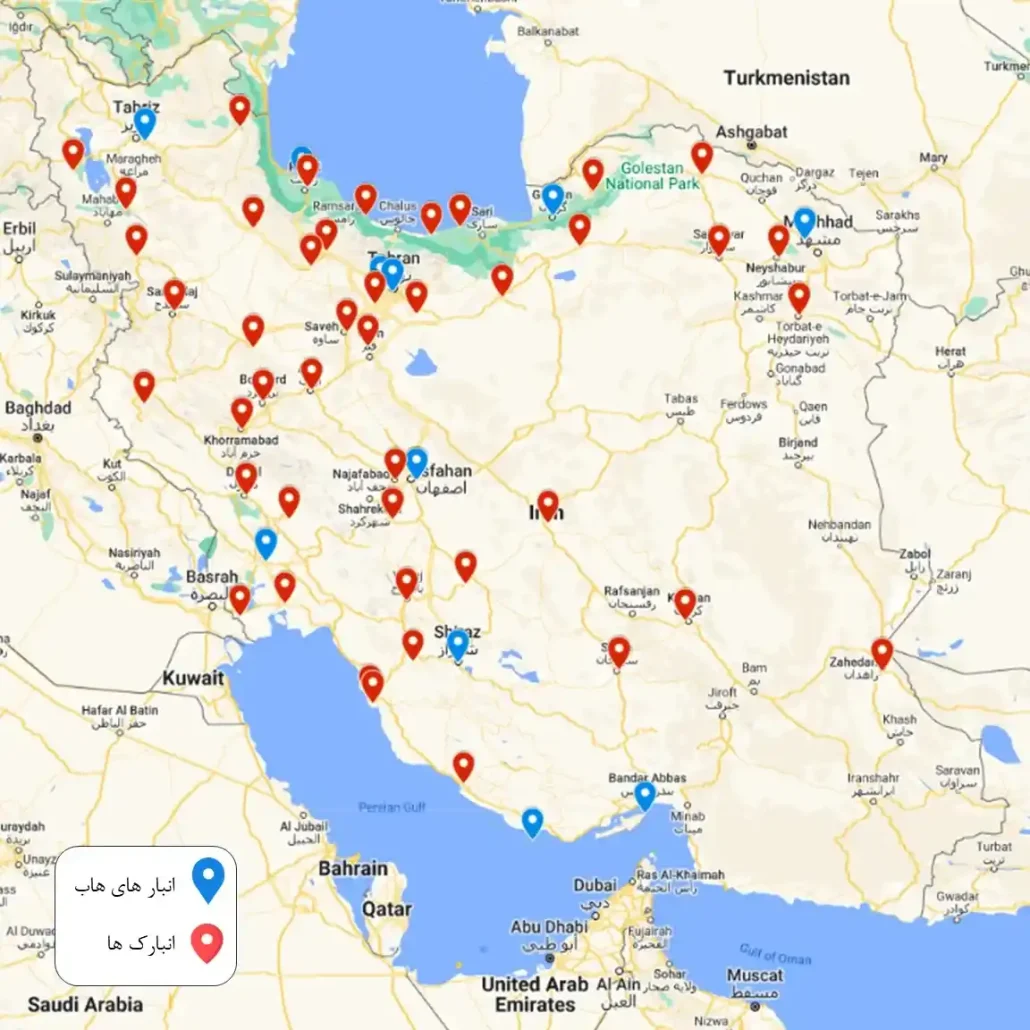- 021-91034194
- Info@pishco.ir
- Tehran, Sa'adat Abad
Home » Infrastructures » Supply of burnt edible oil
Petro Iman Sharif is the first company in the country to establish a nationwide network for the collection of used cooking oil. This is accomplished through over 60 smaller storage units and 10 large hub warehouses, with the oil being transported to two large factories in the central region of the country. The purchasing, collection, and transportation operations to the factories are managed by the Raw Material Supply Management team. To optimize warehouse management and improve transportation routes for oil delivery to the factories, the company has set up hub warehouses along major routes and in large cities across the country. The current storage capacity of the company is 420 tons, with plans to expand this capacity to 800 tons as part of future development projects. The list of hub warehouses and their storage capacities is shown in the table below.
You can register your request to sell used cooking oil to Petro Iman Sharif or contact our experts for further assistance.
The location of the hub warehouses is strategically selected to ensure maximum accessibility to smaller warehouses and major cities, minimizing transportation costs. The mapping of the hub warehouses across the country and the transportation routes for moving the oil from smaller warehouses to the hubs is shown in the diagram below.
Each of the hub warehouses is equipped with a laboratory and laboratory equipment to accurately measure and monitor the quality of both the incoming and outgoing oil (the oil sent to the factory). An example of the laboratory equipment is shown in the diagram below. Petro Iman Sharif has made significant investments at the provincial level to establish this business, as detailed below, and the scope of the used cooking oil supply management activities is further reported.
Row | Anbar – province | Volume of warehouses-tons |
1 | Tehran warehouses | 60 |
2 | Hub Alborz warehouse | 35 |
3 | Qom warehouses | 40 |
4 | Hub warehouse in Isfahan | 35 |
5 | Shiraz hub warehouse | 30 |
6 | Hub warehouse – Rasht | 35 |
7 | Ahvaz hub warehouse | 35 |
8 | Warehouses in Mashhad | 40 |
9 | Golestan Hub Warehouse – Gorgan | 45 |
10 | Hub warehouse in Tabriz | 35 |
The purchasing process in the supply chain of Petro Ayman Sharif Knowledge-Based Company has 4 stages:
Market Research:
The market research team is responsible for generating business leads (sources that may have edible oil waste) based on company standards from various sources including the following.
Using previous data and past purchases
Collecting data in the field (field researcher)
Use of offline data (first book, exhibition book, saleable sources, etc.)
Collecting data by searching the online space
Use of unsuccessful visits of collectors
Incoming calls (after offline and online advertising and branding)
Use of tender and auction sites and systems such as the Iran Headquarters system (Government Electronic Procurement System)
Presence in food and environmental industry exhibitions
After collecting data and completing relevant information including brand name, contact name, contact information, geographical information, etc., as well as classifying the target market based on Appendix 1 and final standardization, this team enters the information into the CRM software and delivers it to the purchasing team.
Purchasing Team
Currently, the purchasing team at Petro Ayman Sharif Knowledge-Based Company is working to purchase waste cooking oil. The leads referred to this team are divided among this team on a daily basis, according to the province of operation, by the department management, and according to the target market, through customer management software (CRM).
The purchasing team initiates and follows up on the purchase negotiations based on the type of lead referred (B2B, B2C, B2G) and according to the training of scripts related to each lead.
B2C leads
When faced with these types of leads, telephone or in-person negotiations are held, and the necessary agreements are made regarding weight, price, time, and method of collection in full.
B2B leads
In the case of these leads, which include factories, organizations, organs, etc., initial contact is made, and after reaching the relevant person in charge, correspondence is initiated to request cooperation. The letter requesting cooperation and company licenses is sent to the desired source, and the necessary follow-ups are carried out, and the company’s price offer is sent according to the mentioned items (weight, quality, geography, etc.).
If necessary, face-to-face meetings are held for final coordination, and after obtaining final agreements, the contract is entered into, and the agreements made regarding weight, price, time, and method of collection, and the general method of cooperation are recorded in the contract.
If the customer needs approval from the country’s comprehensive waste management system, the process of purchasing and delivering waste to the company is carried out through this system, and the necessary approvals are obtained.
If it is necessary to check the quality of the oil before signing the contract, a sample is received from the supplier and sent to the quality control unit, and if approved, the contract and purchase are concluded without any obstacles.
B2G Leads
Depending on the province where the tender or auction is being held, the lead is transferred to the purchasing team members and the necessary follow-ups are carried out, including receiving the tender documents, collecting the required documents, transferring them to management, preparing the price offer, and following up on the shipment. After that, the second phase includes following up on the success of the tender. If the third phase is finalized, the work includes following up on the contract and the method and time of collection.
How to announce collection by the purchasing team
After the negotiations are finalized and based on the agreements made with the supplier, the purchasing team transfers the items in question, including weight, agreed price, collection time, type of containers, descriptions, and necessary items, including items required for collection, to the collector (collector force) through the CRM portal.
3-2 Support Team – Collection and Warehousing
When the process of collection from suppliers is announced by the purchasing team to the collector (collecting force), this team will be responsible for the support and final coordination for collection as follows.
Oil quality check: In the case of small suppliers, the purchase status is checked by the collector on site and items such as water, lard, additives, absence of sanitary materials and absence of petroleum products, etc. are checked. In the case of major suppliers, the collector is present at the oil collection site and, according to the training, standard sampling is carried out and the desired sample is sent to the factory laboratory for examination and necessary tests and after final approval of the purchase, it is made
Provision of financial resources: To pay the purchase amount based on advance payment for contractual cases, direct payment to the supplier in the case of major suppliers or the collector’s salary in the case of small suppliers and based on the type of supplier.
Supply of tools and equipment for loading: Review and coordination of the required tools, equipment and containers, including pumps, hoses, sources, barrels, etc., as needed and based on the type of supplier and the weight of the load.
Logistics provision: Coordination with the transportation team based on the weight of the waste cooking oil and the supplier’s storage source to provide logistics appropriate to it, such as tankers, Khavar, Nissan, etc. for major suppliers and collector vehicles for small suppliers.
Follow up on the collection method until the last moment to resolve possible problems.
Follow up on the invoice registration based on the collection and final confirmation of the invoice.
Upon completion of the collection and finalization of the weight of the purchased oil by the scale sheet, the desired invoice is registered in the Pishco system by the collector based on the information sent by the purchasing team. For this, the support team must first send the relevant CRM software to the Pishco software. After weighing, according to the price of the
To view the investment volume for each province, please click on the desired province.
In order to maximize collection nationwide, collectors have been strategically positioned across the country to cover major population centers and ensure geographical accessibility to most rural and urban areas. The distribution of collectors and collection points is depicted in the map below.


Related websites
quick access

Petro Imen Sharif Engineering Company was founded in 2010 by a group of engineers and specialists graduated from top universities in Iran, who believe in the motto “Desire creates” and with a focus on advancing scientific movements in the field of environmental protection.
No. 5, Kaj square, Ali Akbar alley, Saadat Abad, Tehran
Plate 1- West 38 Alley- South Allameh St. -Sadat Abad - Tehran
Saturday to Wednesday 8:15 AM to 4:30 PM Thursdays: 8:15 AM to 1 PM
لطفا فرم زیر را به دقت پر کنید تا مشاورین ما در اسرع وقت با شما تماس حاصل فرمایند.
Please fill out the form below carefully so that our consultants will contact you as soon as possible.